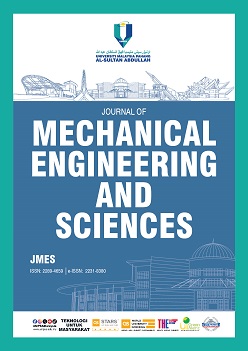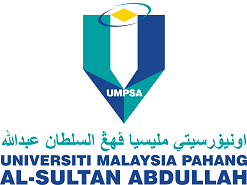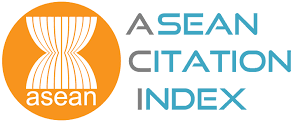Spectral-based numerical solution method of the incompressible Navier-Stokes equation in a stretched coordinate system
DOI:
https://doi.org/10.15282/jmes.19.2.2025.2.0830Keywords:
Incompressible Navier-stoker, Splitting method, Pressure correction approach, Pseudospectral gridding methodAbstract
The numerical solution of the Navier-Stokes equation is widely used in computational fluid dynamics to address engineering problems related to fluids. The method can deal with nonlinear coupling between velocity and pressure fields. In this study, a robust numerical approach integrates the pseudospectral method with a splitting algorithm and a pressure correction technique to solve the two-dimensional incompressible Navier-Stokes equation effectively. This study aims to confirm the accuracy of the suggested method by comparing its results with benchmark two-dimensional solutions and to assess the computational efficiency of the developed algorithm. The pseudospectral method is typically applied to simpler problems involving Ordinary Differential Equations and Partial Differential Equations. Spatial discretization was performed using cardinal Chebyshev basic functions, which offer spectral accuracy and apply to non-periodic domains. The problem was divided into smaller, more manageable pseudospectral grids using a splitting algorithm and combined with a nonlinear term formulation. The combination technique allows for the decoupling of velocity and pressure computations. The numerical scheme was implemented in MATLAB and evaluated for Reynolds numbers (Re) of 100, 400, and 1000. The simulation results indicate a strong correlation between the predicted velocity profile and vortex formation, aligning closely with established benchmark data. The percentage differences of the compared data were 0.02% for U-Velocity and 2.11% for V-Velocity at Re = 100, respectively. The predicted flow pattern and centre location of the vortices matched closely with the reference value, confirming the method's accuracy. Additionally, the approach exhibited rapid convergence and computational efficiency. In conclusion, the proposed technique successfully demonstrates the capability to solve the incompressible flow problem and provides accurate results up to a Reynolds number of 1000. A stability analysis described in this study indicates that the proposed method remains applicable at higher Reynolds numbers.
References
[1] S. R. Bistafa, “On the development of the Navier-Stokes equation by Navier,” Revista Brasileira de Ensino de Física, vol. 40, no. 2, p. e2603, 2018.
[2] C. De Michele, F. Capuano, G. Coppola, “Fast-projection methods for the incompressible Navier–Stokes equations,” Fluids, vol. 5, no. 4, p. 222, 2020.
[3] M. Kavitha, L. Abhang, M. Kumar, M. Balamurugan, M. Mallesh, “Advanced finite element methods for solving fluid dynamics problems in engineering applications,” Metallurgical and Materials Engineering, vol. 31, no. 3, pp. 201-209, 2025.
[4] W. Cao, X. Shan, S. Tang, W. Ouyang, W. Zhang, “Solving parametric high-Reynolds-number wall-bounded turbulence around airfoils governed by Reynolds-averaged Navier–Stokes equations using time-stepping-oriented neural network,” Physics of Fluids, vol. 37, no. 1, p. 1, 2025.
[5] A. J. Chorin, “Numerical solution of the Navier-Stokes equations,” Mathematics of Computation, vol. 22, no. 104, pp. 745-762, 1968.
[6] N. N. Janenko. The Method of Fractional Steps: The Solution Problems of Mathematical Physics in Several Variables. 1st Ed. Berlin: Springer Science & Business Media, 2012.
[7] J. P. Boyd. Chebyshev and Fourier Spectral Methods. 2nd Ed. New York: Dover Publications, Inc., 2001.
[8] S. Blanes, F. Casas, A. Murua, “Splitting methods for differential equations,” Acta Numerica, vol. 1, pp. 1-160, 2024.
[9] R. Temam. Navier–Stokes Equations: Theory and Numerical Analysis. Volume 343. Rhode Island: AMS Chelsea Publishing, 2024.
[10] J. Van Kan, “A second-order accurate pressure-correction scheme for viscous incompressible flow,” SIAM Journal on Scientific and Statistical Computing, vol. 7, no. 3, pp. 870-891, 1986.
[11] G. E. Karniadakis, M. Israeli, S. A. Orszag, “High-order splitting methods for the incompressible Navier-Stokes equations,” Journal of Computational Physics, vol. 97, no. 2, pp. 414-443, 1991.
[12] K. B. Osman, “Multiple steady solutions and bifurcations in the symmetric driven cavity,” Doctoral Dissertations, University of New Hampshire, 2004.
[13] M. Z. Ngali, “Solution to navier-stokes equation in stretched coordinate system,” Master Thesis, Universiti Teknologi Malaysia, 2005.
[14] W. Kim, H. Choi, “Immersed boundary methods for fluid-structure interaction: A review,” International Journal of Heat and Fluid Flow, vol. 75, pp. 301-309, 2019.
[15] H. Ibarra-Villalon, O. Pottiez, A. Gómez-Vieyra, J. Lauterio-Cruz, “Comparative study of finite difference methods and pseudo-spectral methods for solving the nonlinear Schrödinger equation in optical fiber,” Physica Scripta, vol. 98, no. 6, p. 065514, 2023.
[16] H. Ibarra-Villalon, O. Pottiez, A. Gómez-Vieyra, Y. Bracamontes-Rodriguez, J. Lauterio-Cruz, “Numerical study of the fundamental fiber soliton propagation,” Revista Mexicana de Física E, vol. 17, no. 12, pp. 191-200, 2020.
[17] S. A. Mathias, G. C. Sander, “Pseudospectral methods provide fast and accurate solutions for the horizontal infiltration equaetion,” Journal of Hydrology, vol. 598, p. 126407, 2021.
[18] O. Botella,R. Peyret, “Benchmark spectral results on the lid-driven cavity flow,” Computers & Fluids, vol. 27, no. 4, pp. 421-433, 1998.
[19] H. Johnston, J.-G. Liu, “Accurate, stable and efficient Navier–Stokes solvers based on explicit treatment of the pressure term,” Journal of Computational Physics, vol. 199, no. 1, pp. 221-259, 2004.
[20] J.-L. Guermond, L. Quartapelle, “Calculation of incompressible viscous flows by an unconditionally stable projection FEM,” Journal of Computational Physics, vol. 132, no. 1, pp. 12-33, 1997.
[21] U. Ghia, K. N. Ghia, C. Shin, “High-Re solutions for incompressible flow using the Navier-Stokes equations and a multigrid method,” Journal of Computational Physics, vol. 48, no. 3, pp. 387-411, 1982.
[22] L. N. Trefethen. Spectral Methods in MATLAB. 1st Ed. United States: SIAM Publications Library, 2000.
[23] W. Kress, P. Lötstedt, “Time step restrictions using semi-explicit methods for the incompressible Navier–Stokes equations,” Computer Methods in Applied Mechanics and Engineering, vol. 195, no. 33-36, pp. 4433-4447, 2006.
Downloads
Published
Issue
Section
License
Copyright (c) 2025 The Author(s)

This work is licensed under a Creative Commons Attribution-NonCommercial 4.0 International License.






